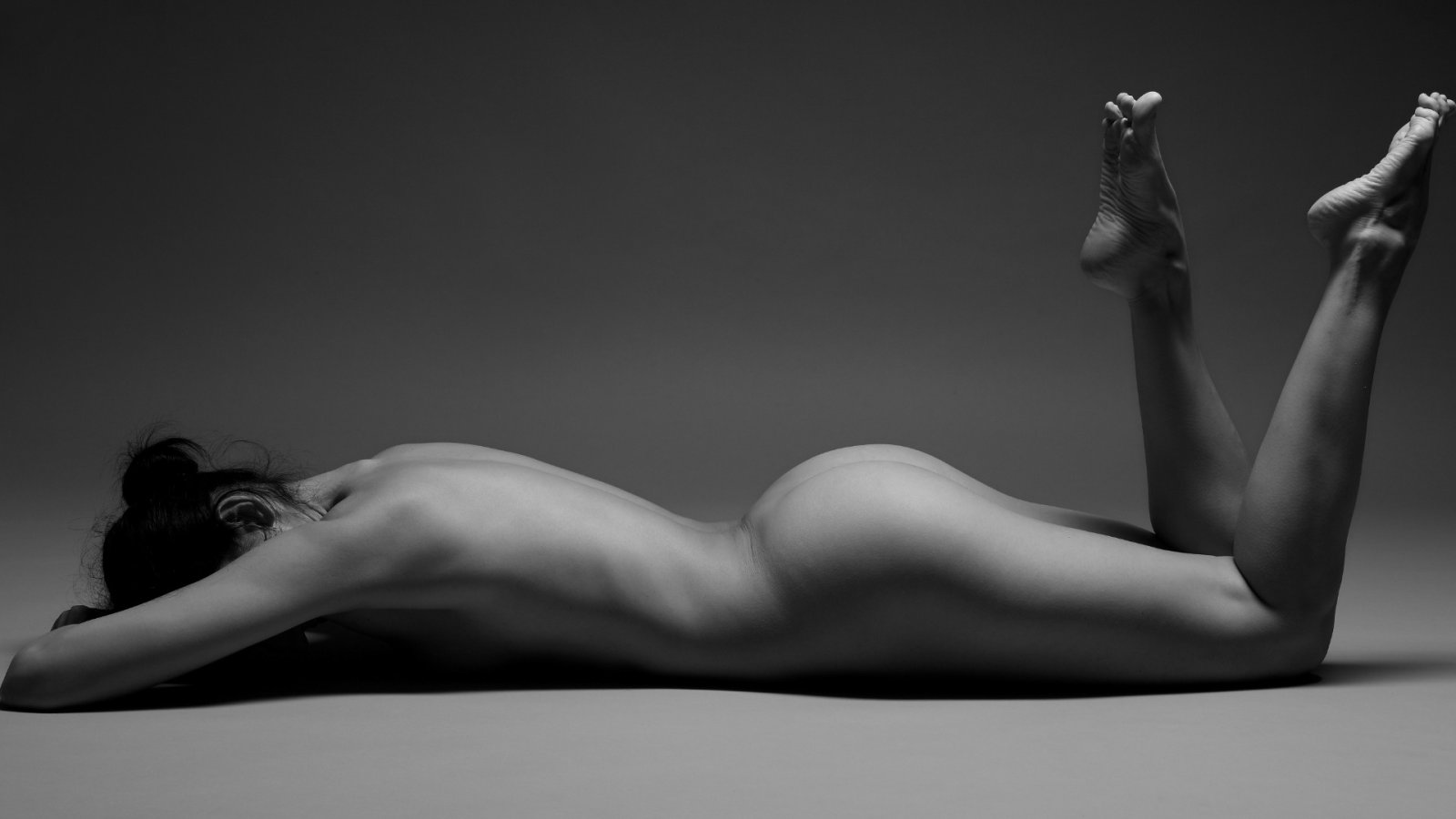Η γυμνή φωτογραφία, ένα είδος που εμφανίστηκε στα μέσα του 19ου αιώνα, αναδεικνύει το ανθρώπινο σώμα στην πιο παρθένα μορφή του, αναδεικνύοντας την αισθητική, τη διάταξη και τα προκλητικά συναισθήματα. Αυτή η μορφή τέχνης αναδημιουργούσε έναν βασικό ρόλο στο να αναδειχθεί η φωτογραφία ως ένα αξιοθαύμαστο μέσο στη σφαίρα των καλών τεχνών. Στην πραγματικότητα, είναι απαραίτητο να διακρίνουμε τη γυμνή φωτογραφία από την ερωτική φωτογραφία, αν και υπήρξε μια σπάνια επικάλυψη μεταξύ των δύο ειδών με την πάροδο του χρόνου. Ενώ μπορεί να υπάρχουν σημεία αισθησιασμού, η πρωταρχική εστίαση της γυμνής φωτογραφίας καλών τεχνών έγκειται στην καλλιτεχνική παρουσίαση και όχι στον τίτλο, διαχωρίζοντάς την τόσο από τη λαμπερή όσο και από την ερωτική φωτογραφία, η οποία στοχεύει στην απεικόνιση των θεμάτων με ελκυστικό τρόπο και την απλή πορνογραφία, η οποία αποκλειστικά στοχεύει να ικανοποιήσει τους θεατές σεξουαλικά χωρίς να επιβεβαιώσει καμία εγγενή καλλιτεχνική αξία.
Οι φωτογραφίες καλών τεχνών διαφέρουν από άλλες μορφές φωτογραφίας στο ότι δεν εξυπηρετούν πρωτίστως δημοσιογραφικούς, επιστημονικούς ή πρακτικούς στόχους. Μεταξύ όλων των μέσων, η περιγραφή του γυμνού συνεχίζει να αποτελεί αντικείμενο διαμάχης, ειδικά στη σφαίρα της φωτογραφίας λόγω της εγγενούς αληθοφάνειας του. Σε όλη την ιστορία της τέχνης, το ανδρικό γυμνό ήταν λιγότερο κυρίαρχο από τις γυναίκες ομολόγους τους, πιθανότατα επηρεασμένο από την κυριαρχία των ανδρών καλλιτεχνών. Κατά συνέπεια, τα ανδρικά γυμνά εκτίθενται ή δημοσιεύονται λιγότερο συχνά. Ωστόσο, το πιο αμφιλεγόμενο ζήτημα προκύπτει όταν τα παιδιά εμπλέκονται ως θέματα στη γυμνή φωτογραφία.
Έτσι, αν θέλετε να ανακαλύψετε μια εκπληκτική συλλογή από γυμνές φωτογραφίες και να μάθετε περισσότερα για αυτούς τους καλλιτέχνες - που αντιμετωπίζουν την κρίση στην κοινωνία - διαβάστε!
Ευγένιος Ντουριέ
Ο Eugene Durieu γεννήθηκε το 1800 και ήταν δικηγόρος που τολμούσε στις πρώτες μέρες της φωτογραφίας - ως αξιόλογος συνήγορος και πρωτοπόρος. Με το όνομα Jean-Louis-Marie-Eugène Durieu, έγινε γνωστός για μια σειρά μελετών που έκανε στο Παρίσι μεταξύ 1853 και 1854, με γυμνές φιγούρες. Σε συνεργασία με τον φίλο του, τον διάσημο Γάλλο ρομαντικό ζωγράφο Eugène Delacroix, ο Durieu προσπάθησε να προσφέρει στους καλλιτέχνες μια φθηνή και βολική επιλογή για ζωντανά μοντέλα. Ο Ντελακρουά και πολλοί άλλοι ζωγράφοι τίμησαν το έργο του Ντουριέ, συχνά ενσωματώνοντας σκίτσα από τις φωτογραφίες του όταν δημιουργούσαν τις στάσεις των μορφών στις συνθέσεις τους. Συσχετίζοντας τις φωτογραφίες του Durieu με την αναζήτηση και τη μελέτη των καλών τεχνών, αυτά τα κομμάτια κατάφεραν να υπάρχουν με ελάχιστη λογοκρισία. Ως αποτέλεσμα, οι θεατές αυτών των φωτογραφιών δεν αντιμετώπισαν τον τυπικό εξοστρακισμό που υπέστη εκείνη την εποχή.
Λάρι Κλαρκ
Ο Larry Clark είναι ένας Αμερικανός φωτογράφος και σκηνοθέτης, ο οποίος μπήκε στη σκηνή τη δεκαετία του 1970 με το πρωτοποριακό βιβλίο του με τίτλο "Tulsa". Αυτή η συλλογή από ακατέργαστες και ακατέργαστες φωτογραφίες ντοκιμαντέρ απεικόνιζε εφήβους που εμπλέκονται σε χρήση ναρκωτικών, σεξουαλικές συναντήσεις και σωματικές διαμάχες. Το βιβλίο ώθησε τον Κλαρκ στο προσκήνιο και συνέχισε να ξεπερνά τα όρια μέσα από ταινίες, δείχνοντας αφιλτράριστα πορτρέτα εφήβων της Νέας Υόρκης. Το πρωτοποριακό έργο του Κλαρκ όχι μόνο δημιούργησε ένα νέο είδος βιογραφικής φωτογραφίας, αλλά πυροδότησε επίσης μαζικές διαμάχες και αιτήματα για λογοκρισία. Καθ' όλη τη διάρκεια της καριέρας του, ο Clark παρέμεινε συγκεντρωμένος στην εμβάθυνση στις μοναδικές του εμπειρίες, αποτυπώνοντας έντονα θέματα όπως ο εθισμός στα ναρκωτικά, η επιδημία του AIDS, η αυτοκτονία, η κακοποίηση και η σεξουαλικότητα στην τέχνη του.
Χέλμουτ Νιούτον
Ο Helmut Newton ήταν ένας διάσημος Γερμανός φωτογράφος που γεννήθηκε το 1920 και έφερε επανάσταση στον χώρο της φωτογραφίας μόδας. Αν και αρχικά προσλήφθηκε από τη γαλλική Vogue τη δεκαετία του 1950, μόλις τη δεκαετία του 1970 η δουλειά του κέρδισε σημαντική αναγνώριση. Κατά τη διάρκεια αυτής της περιόδου, ο Newton έγινε γνωστός για τις αμφιλεγόμενες εικόνες μοντέλων μόδας σε πολύ σεξουαλικές θέσεις και κομμάτια. Το ασυνήθιστο στυλ του Νεύτωνα περιελάμβανε τη σύλληψη όμορφων και δυνατών γυναικών ως θέματά του, με αποτέλεσμα εικόνες εμποτισμένες με στοιχεία φετιχισμού, στροφής, λυγισμού φύλου και ηδονοβλεψίας. Αυτές οι έννοιες, που εισήγαγε ο Newton, έφτασαν στα mainstream περιοδικά μόδας, όπου συνεχίζουν να επηρεάζουν τη σύγχρονη φωτογραφία.
Το 1976, το περιοδικό Time ονόμασε τον Νεύτωνα «Βασιλιά του Κινκ» λόγω των προκλητικών εικόνων που εμφανίζονται στο πρώτο του βιβλίο που παρουσίαζε ένα μείγμα πολυτέλειας και ερωτισμού, ένα θέμα που ο Νεύτων θα επέμενε να εξερευνά σε όλη την εξαιρετική του καριέρα.






